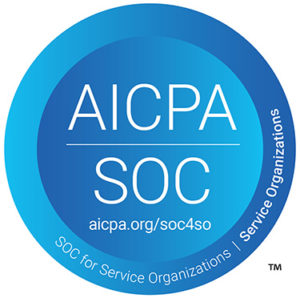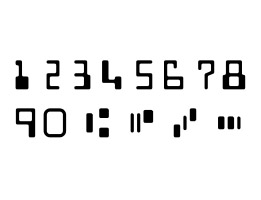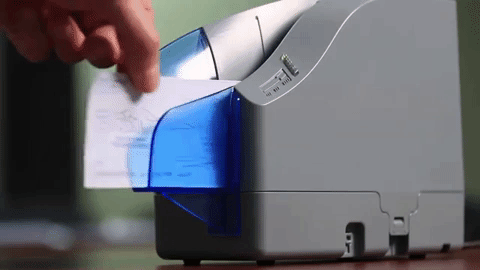
Occasionally, we will see reports from banks or credit unions baffled that their scanners seem to have intermittent issues with unreadable MICR printing on checks. There may be no apparent rhyme or reason to this – sometimes it works, sometimes it doesn’t.
To further complicate this puzzle, occasionally it mysteriously “fixes itself” when the same check is re-scanned a few times. (This seems to happen especially often with self-printed checks from laser printers – more on that below!)
While everyone’s first instinct with a computer glitch or a mechanical problem is to simply try it again and hope for better results – there’s no luck or magic involved when it comes to machines. A scanner or a paper check doesn’t “fix itself” just because you try again. Is something really different the second or third time you pass a check through a desktop check scanner? What’s really going on?
The first thing that’s important to understand is that MICR – which stands for Magnetic Ink Character Recognition – is a very black-and-white technology. If the check is printed within industry-standard specifications, the scanner on average reads the MICR line correctly with up to 99.998 percent accuracy. If the MICR printing is outside of spec, then all bets are off. Almost all MICR reading “errors” mean there is a problem with the MICR printing on the check, not with the scanner itself.
This is a good time to mention the difference between a “can’t-read” — in which the check scanner returns an error message because the MICR is unintelligible — and a “misread,” in which the scanner picks up the MICR information, but returns one or more wrong characters. Misreads, while very rare, tend to be more dangerous than can’t-reads, because they can lead to things like incorrect account numbers and balance errors. Here, we are primarily dealing with can’t-reads — but we don’t want them to turn into misreads!
So, how could a MICR can’t-read “fix itself?” As it turns out, sometimes there IS something different about a check after several attempts to read it. On most check scanners today, a magnet located just in front of the MICR head in the scanner track charges the ink on the check’s MICR line just before it’s captured. While the lasting effect is minimal, several passes through the scanner can temporarily impart enough additional magnetism to the MICR line that the signal becomes strong enough to read.
To be perfectly clear: This is not a common occurrence, and simply re-scanning a check is not a “recommended” fix for MICR reading errors in any case. Most of the time, MICR errors are simply problems with the magnetic signal strength of the MICR ink being out of spec, and that’s all there is to it.
The scenario described above requires a very fortunate convergence of events: First, the MICR printing on the check needs to be on the weak side to begin with. Second, it needs to be just on the border of readability – if the signal strength is too low, the small amount of magnetism retained from repeated scanning won’t be enough to push it over the top. And third, it needs to be a document without any other problems impairing its readability. All of these reasons are why the “self-fixing” checks only happen occasionally – just enough to confuse you!
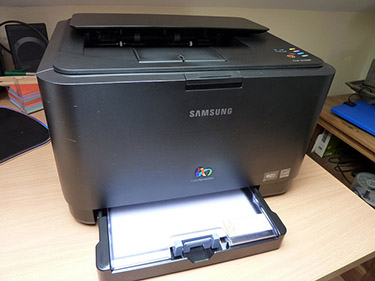
We mentioned that self-printed checks are more likely to have this problem, and there’s a reason for that! In another article, we explained that laser printer toner is slightly magnetic – about 20 percent as much as standard MICR printing. This will usually result in the scanner failing to read the MICR line. Sometimes, repeated passes will energize that weak magnetic ink to the point where it is readable, albeit just barely. (In the case of checks printed with an ordinary inkjet device, there will be no magnetism whatsoever, and repeated scanning will have no effect. The scanner will simply record no MICR data or at best, replace the actual characters with a symbol indicating that a character could not be accurately read. In some cases, it may try to use Optical Character Recognition (OCR) instead – or it may simply flag the item for manual intervention.)
Most of the time, when we hear about this issue, it turns out the bank is repeatedly receiving the same slightly out-of-spec checks from the same customer – and self-printed checks are among the main culprits. Whenever you receive a self-printed check, remember: It might have been printed with in-spec MICR toner (rarely); it might have come from a regular laser printer and have faint magnetism; or it might have been printed with ordinary inkjet ink, and have no magnetism at all.
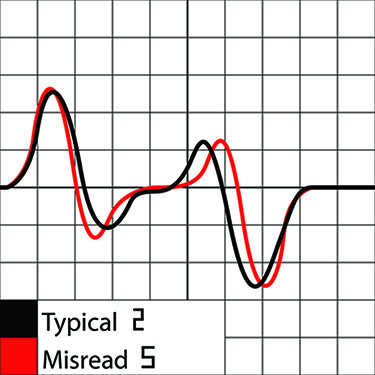 There is no special precaution that will fix this problem; just be aware that a “self-fixing” MICR error does not necessarily mean trouble with the scanner. And, take a moment to examine the document and see if it is part of a pattern, such as a particular customer or check design – remember, if it’s a MICR error, chances are it’s one of these. If you can trace the problem back to its source, you might save yourself a lot of trouble down the road.
There is no special precaution that will fix this problem; just be aware that a “self-fixing” MICR error does not necessarily mean trouble with the scanner. And, take a moment to examine the document and see if it is part of a pattern, such as a particular customer or check design – remember, if it’s a MICR error, chances are it’s one of these. If you can trace the problem back to its source, you might save yourself a lot of trouble down the road.
One last thing: We mentioned above that this mysterious issue mainly has to do with can’t-read errors, but one of the main things that causes misread errors is — you guessed it — weak magnetic signal strength. If you notice a check that fails the MICR test several times and then mysteriously goes through, be aware that what you have probably done is to impart just enough magnetism to give it borderline MICR strength, and this is exactly what can sometimes turn a can’t-read into a misread. Many teller programs will use OCR to double-check the numbers and flag any mismatches; but remember, if you have a problem document, there is no substitute for manually confirming the information. Follow the usual procedure for misreads and can’t-reads — a few seconds of your time now could save a lot more time and expense later!
